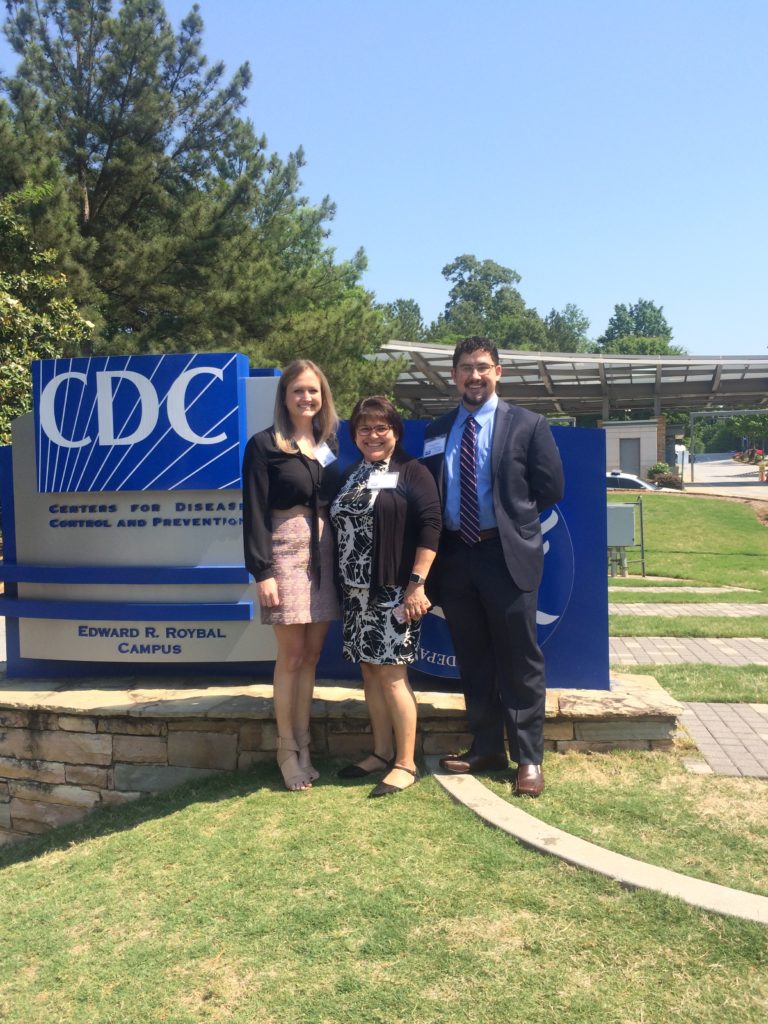Public health, private healthcare work together on common goal
July 26, 2018 • Uncategorized

When public health and private healthcare work together, more can be accomplished in preventing tuberculosis (TB), says recent UNT Health Science Center graduate Armando Moreno, MPH ’18, Health Management and Policy.
Moreno had an opportunity to collaborate over the last year with another graduate of the UNTHSC College of Public Health while completing an internship at the North Texas Area Community Health Centers (NTACHC) patient care clinic in North Fort Worth.
The nonprofit NTACHC network operates three clinics in Fort Worth and Arlington, serving a primarily uninsured and underinsured population.
Northside Community Health Center, where Moreno worked, is located in the center of 13 federally designated, medically underserved census tracts in Tarrant County where a shortage of health professionals and services exists.
Partnering with UNTHSC alum Jessica Allen, MHA, who serves as Northside’s Manager of External Affairs, Moreno’s work represents a national CDC initiative to reduce TB risk and infection.
Since 2001, UNTHSC has served as one of 10 sites around the country focused on this effort through the CDC’s Tuberculosis Epidemiologic Studies Consortium (TBESC), led by Thad Miller, DrPH, MPH, Associate Professor, Health Behavior and Health Systems.
Moreno’s goal was to build a connection between TBESC and NTACHC’s ongoing work serving Fort Worth’s underserved population.
“One of the biggest risks for TB infection in the U.S. comes from other countries where TB rates are especially prevalent. By working through clinics like Northside, which serves a high foreign-born population, it may be possible to identify risk factors early on, so that individuals with latent TB infection could receive treatment,” Moreno said. “Latent TB can remain hidden, or dormant, with no symptoms for years but can still present a potential risk to others.”
A model was created for administrative and clinical protocol on how to screen and manage care for patients showing latent TB indicators, and Moreno recently traveled to the CDC’s Atlanta headquarters with NTACHC representatives to present the results of this new program.
“We were able to show what can happen when private healthcare joins in collaboration on a public health goal,” Moreno said. “While a public health goal may be deemed as ‘the right thing to do,’ putting it into practice in the private sector, administratively and clinically, has aspects that may require additional costs, changes in coding and billing practices and more, presenting some challenges. So the discussion hinges on how to make it work.”
In sharing their presentation, “A view from the other side: A community provider’s perception of proactive TB prevention,” Moreno, Allen and Northside’s assistant director of nursing emphasized that an important early step in working together is for public health to understand the perspectives and incentives of providers and their agencies in order to partner more effectively.
Another UNTHSC public health student will be transitioning into Moreno’s role with the program this fall as he moves to San Antonio for medical school.


Social media